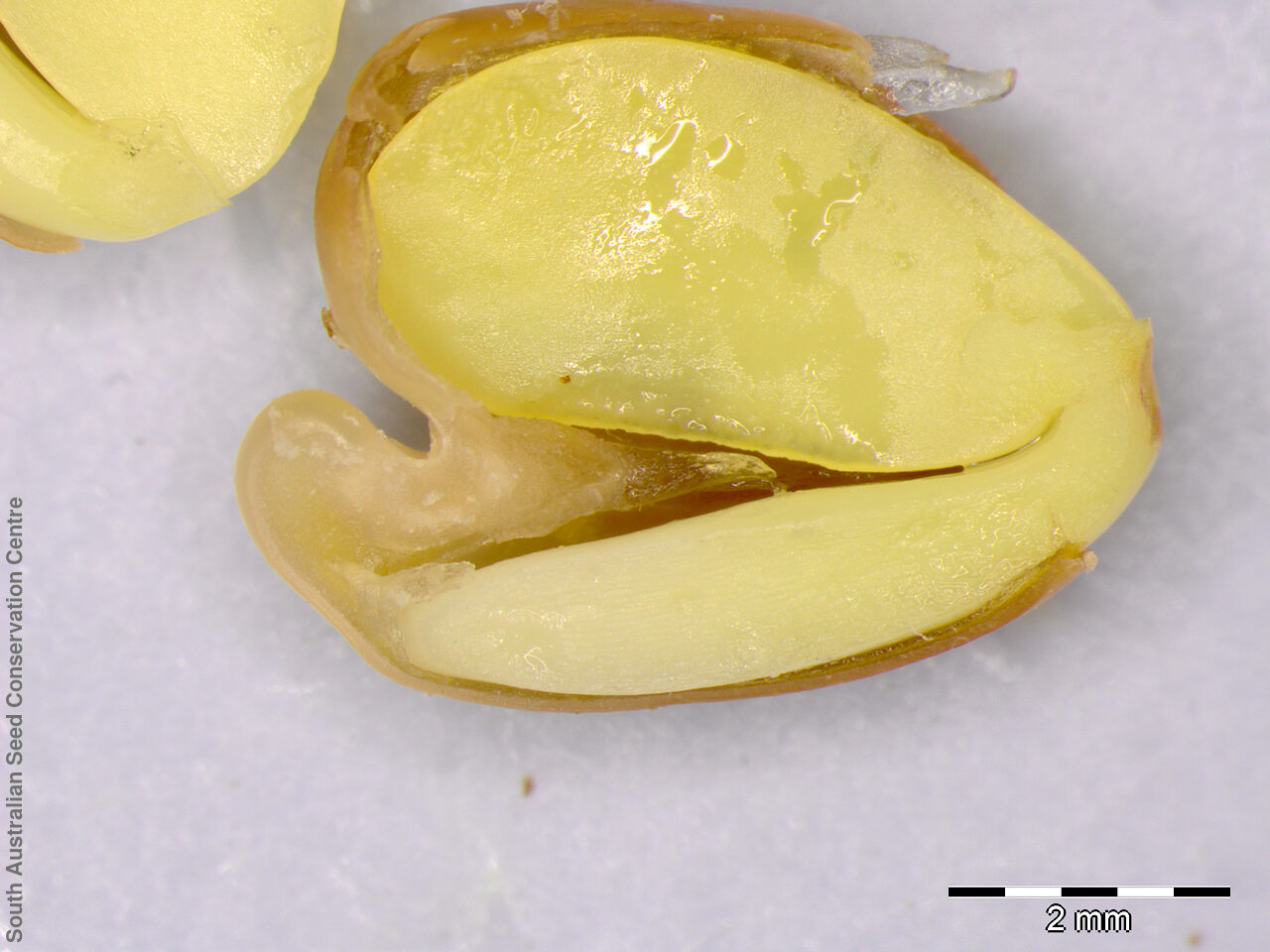












Botanical art
Common names
Hairy Darling pea
Darling Pea
Etymology
Swainsona named after Isaac Swainson (1746-1812, an English scientist and horticulturalist who had a private botanic garden near London. Greyana named in honour of Sir George Grey (1812-1898) an explorer, governor, politician and keen naturalist.
Distribution and status
Found along the River Murray in South Australia. It is limited to the heavy grey soils of the Banks and flats of the lower Murray River and the Darling River and its major tributaries in Queensland, New South Wales and Victoria. Native. Common in South Australia. Common in other states.
Herbarium region: Murray
AVH map: SA distribution map (external link)
Plant description
Shrub-like perennial to 1-2 m high. Leaves 4-16 cm long, with 11-23 woolly, oblong or narrow-oblong leaflets. Flowers white, pink or purple with the keel being apex obtuse and obscurely lipped. Flowering September - March. Fruits are balloon-like papery pod 25-49mm long and 10-30mm wide, tapered at both ends. Seeds are seed reniform, 1-5 mm, olive-green or brown, fine textured. Seed embryo type is bent.
Seed collection and propagation
Collect seeds between November and March. Collect mature pods that are turning pale brown with hard seeds in side. Place the pods in a tray and leave to dry for a week. Rub the papery pods with your fingers or a rubber bung to dislodge the seeds. Use a sieve to separate the unwanted material. Store the seeds with a desiccant such as dried silica beads or dry rice, in an air tight container in a cool and dry place. From three collections, the seed viability were average to high, ranging from 70% to 90%. This species has physical dormancy that need to be overcome for the seed to germinate (e.g. nicking or softening the seed coat).
| Location | No. of seeds (weight grams) | Number of plants | Date collected | Collection number Collection location | Date stored | % Viability | Storage temperature |
|---|---|---|---|---|---|---|---|
| BGA | 138 (1.25 g) | 10 | 5-Dec-2008 | KHB185 Murray | 20-Jul-2009 | 70% | -18°C |
| BGA | 1,800 (22.35 g) | 15 | 19-Mar-2009 | TST724 Murray | 20-Jul-2009 | 90% | -18°C |
| BGA | 880 (7.44 g) | 12+ | 14-Dec-2011 | MJT371 Murray | 1-Nov-2012 | 76% | -18°C |
| BGA | 30,000 (324.2 g) | 100+ | 31-Jan-2018 | JRG651 Murray | 30-Jun-2018 | 90% | -18°C, -80°C |
Number of plants: This is the number of plants from which the seeds were collected.
Collection location: The Herbarium of South Australia's region name.
% Viability: Percentage of filled healthy seeds determined by a cut test or x-ray.